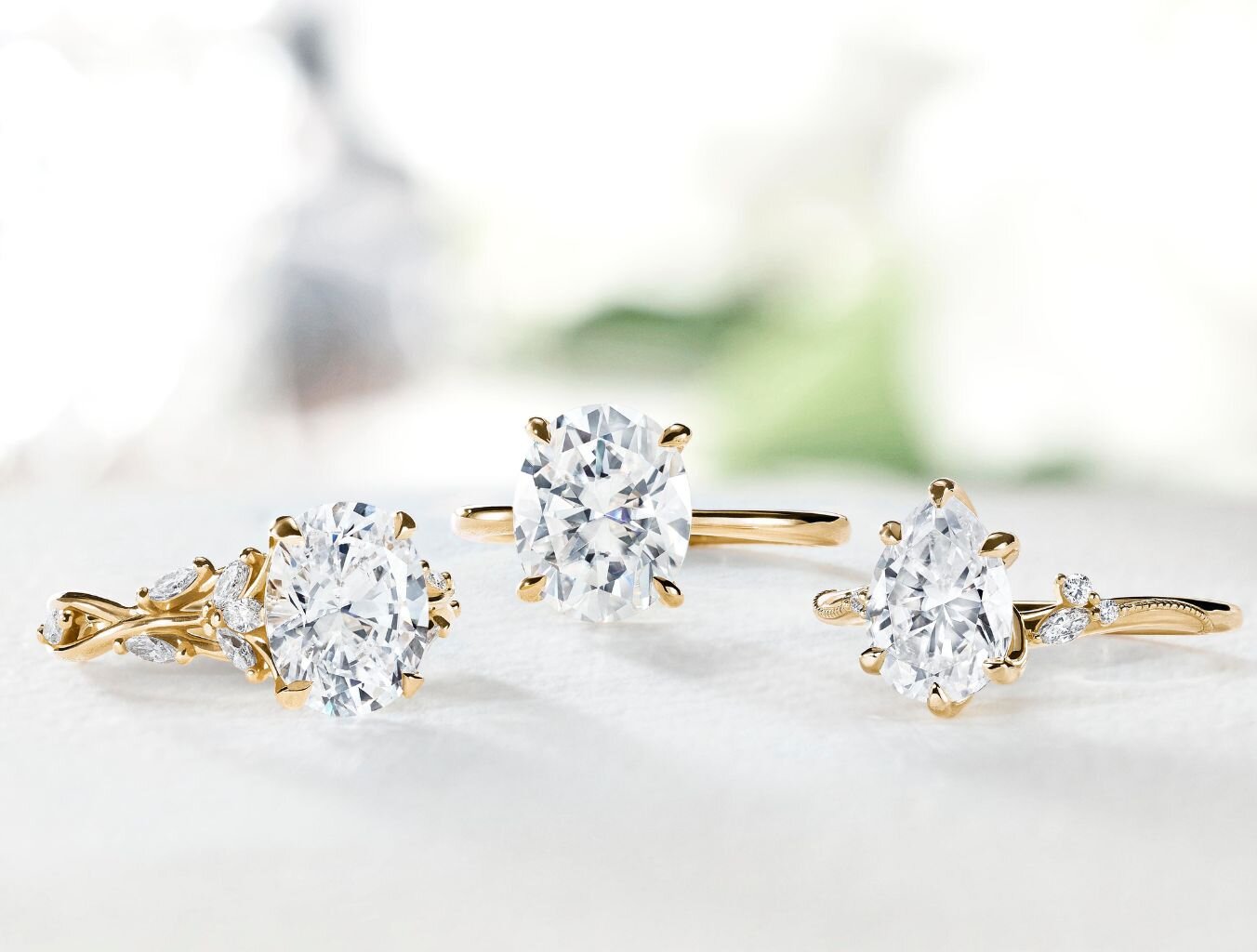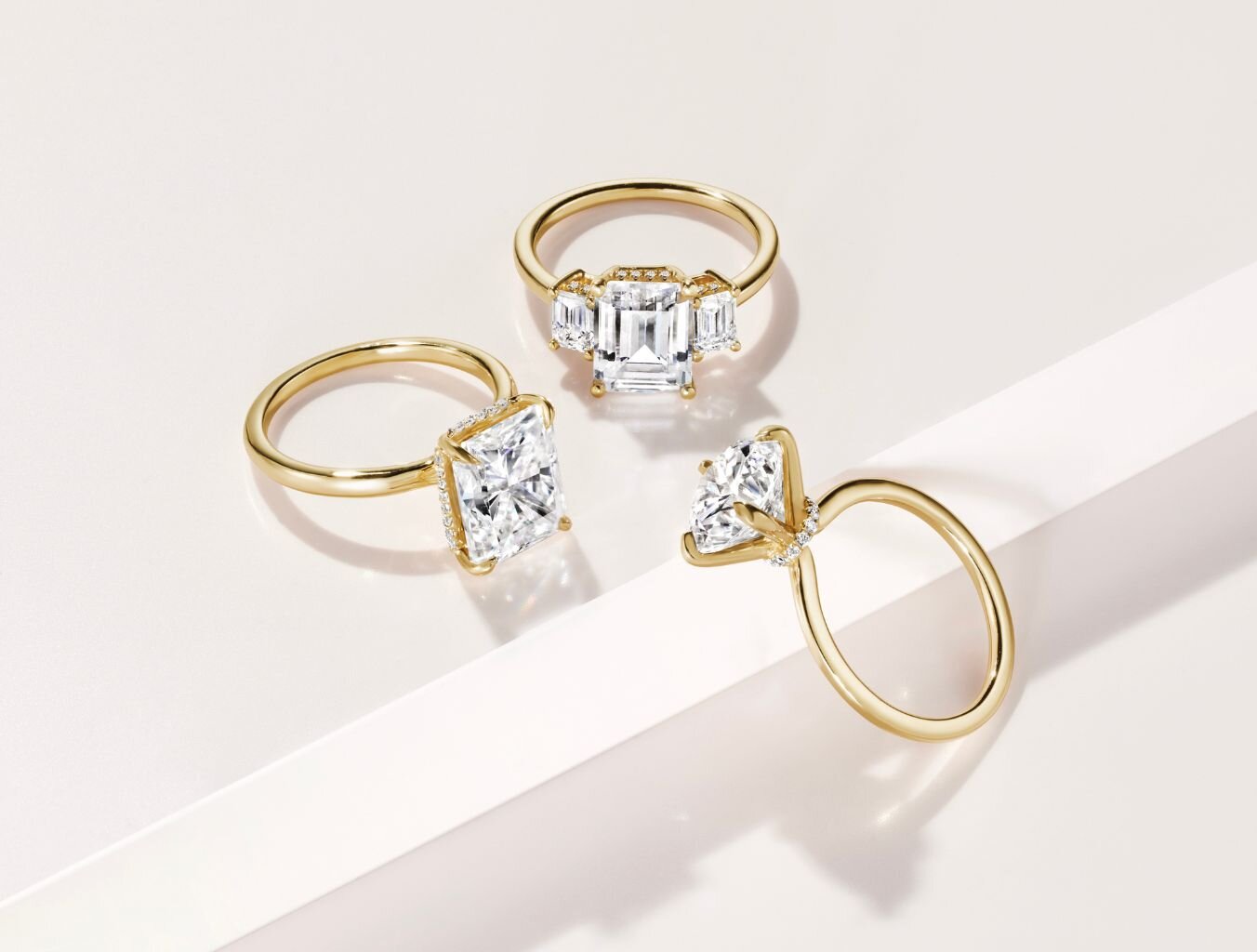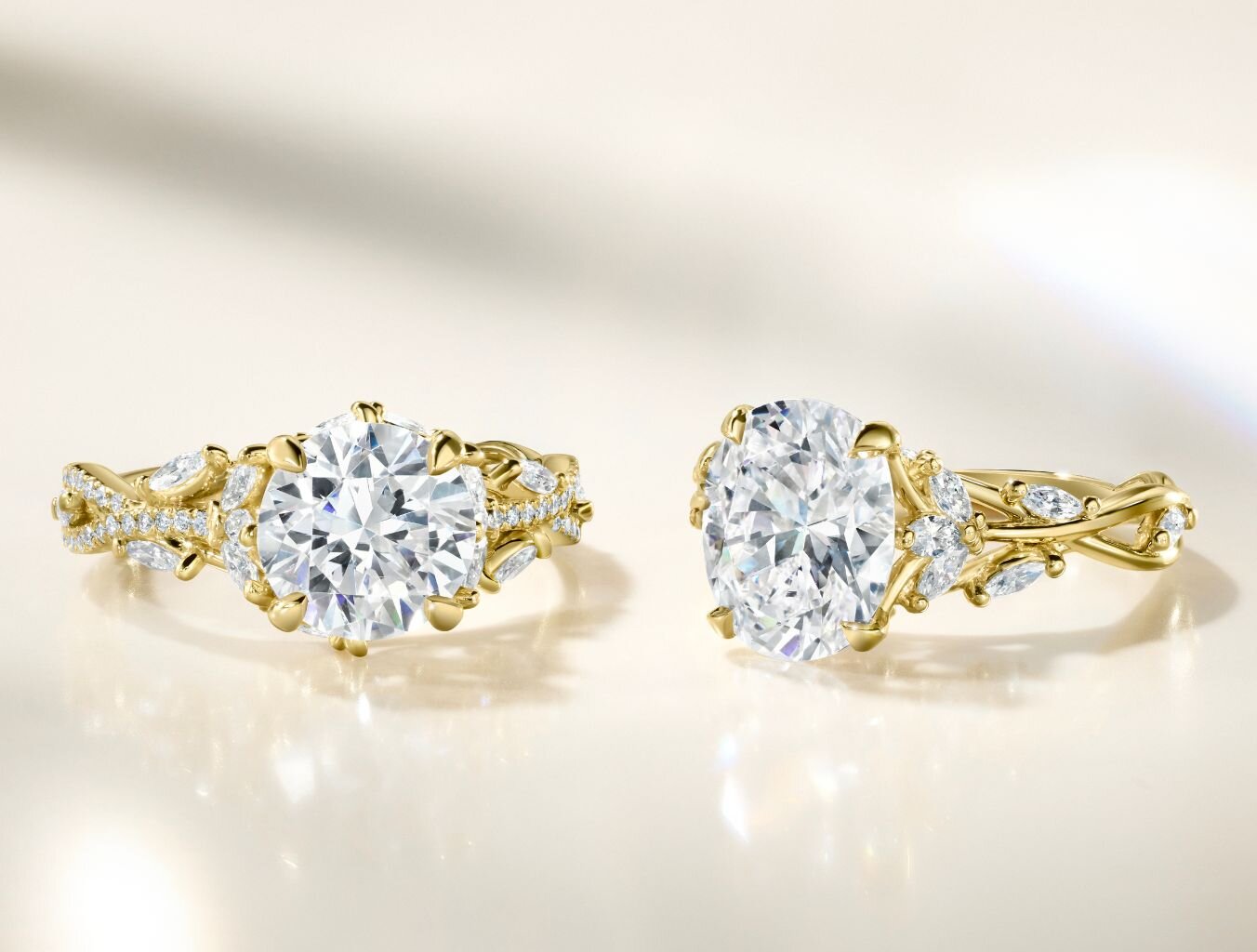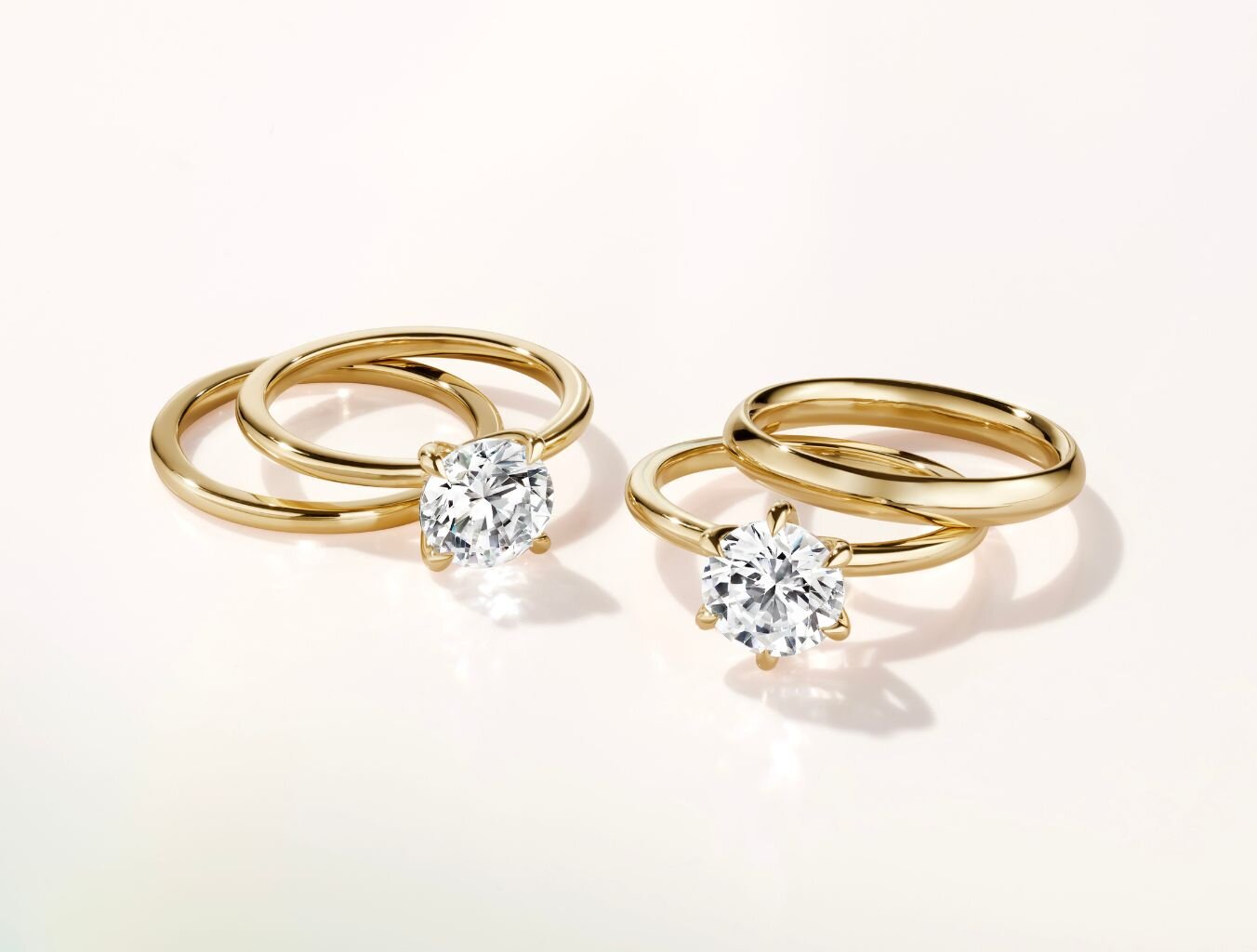
What is a Lab Grown Diamond?
Lab grown diamonds are diamonds created in a laboratory environment. They are chemically, physically, and optically identical to natural diamonds.
Benefits of Lab Grown Diamonds
-

Mining Free
Lab diamonds are a responsible choice as they are grown with precise technology that doesn't involve mining.
-

Beauty
Lab diamonds have the same physical, chemical, and optical properties as natural diamonds.
-

Value
Lab diamonds offer excellent value — so you can maximize your budget across the 4 C's.

What Is a Lab Grown Diamond?
Lab grown diamonds are real diamonds produced in a controlled setting. They are grown in two ways: a High Pressure, High Temperature (HPHT) process that mimics their natural formation in the Earth, or a Chemical Vapor Deposition (CVD) process. Both processes begin with a pure carbon seed arranged in a crystalline structure and result in a lab diamond that is identical to a mined diamond. Lab grown diamonds are available in colorless ranges and rare fancy colors.

Are Lab Grown Diamonds Real?
Yes, lab grown diamonds are as real as natural diamonds are. Their only difference is origin: lab created diamonds are grown in laboratory settings, while natural diamonds form deep in the Earth. Chemically, physically, and optically, lab diamonds are identical to natural diamonds, with the same hardness, brilliance, and fire.
A common misconception is that lab created diamonds lack certain qualities of natural diamonds, but they are indistinguishable —only experts using advanced laboratory equipment can detect subtle differences in their growth patterns.
Lab diamonds also undergo the same grading process as natural diamonds: an assessment of the four Cs — cut, color, clarity, and carat weight. Reputable gemological labs, such as the Gemological Institute of America (GIA) and the International Gemological Institute (IGI), certify lab created diamonds using the same standards as those applied to natural diamonds.

Lab Grown vs. Natural Diamond
The only difference between natural and lab created diamonds is where they come from. Natural diamonds form deep beneath the Earth’s surface under extreme conditions of heat and pressure over billions of years. In contrast, lab diamonds are produced in weeks to months from diamond seeds with the same chemical composition as natural diamonds. Without specialized equipment, it’s nearly impossible to tell lab created diamonds apart from natural ones. Though there are no physical differences between the two, here's how they contrast:
Origin
Lab-grown diamonds are produced in a controlled laboratory setting, whereas natural diamonds are extracted through mining from the Earth.
Price
Lab grown diamonds typically cost less than natural diamonds of comparable quality.
Rarity
Natural diamonds are much rarer than lab-grown diamonds. Because of their limited quantity, natural diamonds have been cherished for their enduring value and passed from generation to generation.

Difference Between Lab Grown and Natural Diamonds
To the naked eye, lab grown and natural diamonds are indistinguishable. However, trained gemologists can detect minor differences in their growth structure and inclusions under high magnification. Specialized equipment can identify growth patterns unique to lab created diamonds, such as certain fluorescence patterns and distinctive internal structures.
Identifiers of Lab Grown Diamonds
- Internal Growth Patterns: HPHT and CVD diamonds may exhibit growth patterns that slightly differ from the octahedral growth pattern in natural diamonds. These slight differences are only visible with gemological equipment.
- Inclusions: Natural diamonds often contain inclusions from natural minerals, while lab created diamonds may contain metallic inclusions or other markers related to the growth process.
- Laser Inscription: Many lab created diamonds are inscribed on the girdle with a microscopic mark indicating their lab origin.
Do you think you can tell the difference between lab grown and natural diamonds just by looking? Test your eye with these side-by-side images.
Diamond Clarity FAQ
What's the main difference between Lab Grown and Natural Diamonds?
The main difference between lab grown and natural diamonds is origin: lab grown diamonds are created in laboratories, while natural diamonds are mined from the Earth.
Can Jewellers tell the difference between Natural Diamonds and Lab Created Diamonds?
Most jewelers cannot tell the difference between lab created and natural diamonds without specialized tools. Gemologists use advanced equipment, like UV light and high-magnification microscopes, to detect growth characteristics unique to lab diamonds.
What are Lab Grown Diamonds made of?
Lab grown diamonds are composed almost entirely of carbon, arranged in a crystalline structure identical to that of natural diamonds. This structure gives diamonds their signature hardness, brilliance, and light-reflecting properties.
Can you tell if a Diamond is Lab Grown?
Yes, but only with specialized equipment and training. Under high magnification, gemologists look for certain growth patterns, fluorescence, or inclusions unique to the CVD or HPHT process to determine if a diamond is lab grown. Many lab diamonds also carry laser inscriptions indicating they were created in a lab.
What are Lab Grown Diamonds Called?
Lab grown diamonds are also referred to as lab created diamonds, man-made diamonds, engineered diamonds, or cultured diamonds. “Lab grown” emphasizes that these diamonds are real, created in a laboratory rather than mined.
What is a Man-Made Diamond?
A man-made diamond is another term for a lab grown diamond, referring to a diamond created in a controlled environment rather than found in nature.
Are Lab Grown Diamonds fake?
No, lab grown diamonds are not fake. They are real diamonds with the same chemical, optical, and physical properties as natural diamonds, both sharing the same carbon-based structure.
Are Lab Grown Diamonds as hard as Natural Diamonds?
Yes, lab grown diamonds are as hard as natural diamonds, with a rating of 10 on the Mohs hardness scale. This hardness makes both lab grown and natural diamonds highly resistant to scratching and ideal for long-lasting jewelry.
Are Lab Diamonds as Good as Real Diamonds?
Lab diamonds match natural diamonds in brilliance, durability, and quality, making them an excellent choice for those looking for a genuine diamond at a more affordable price.



